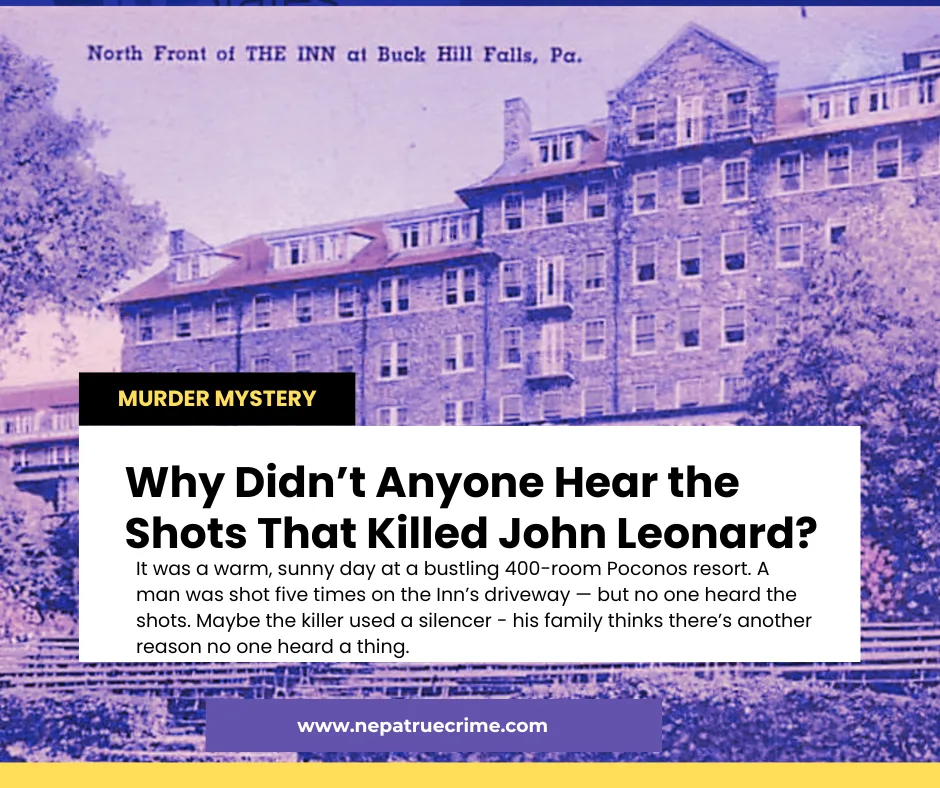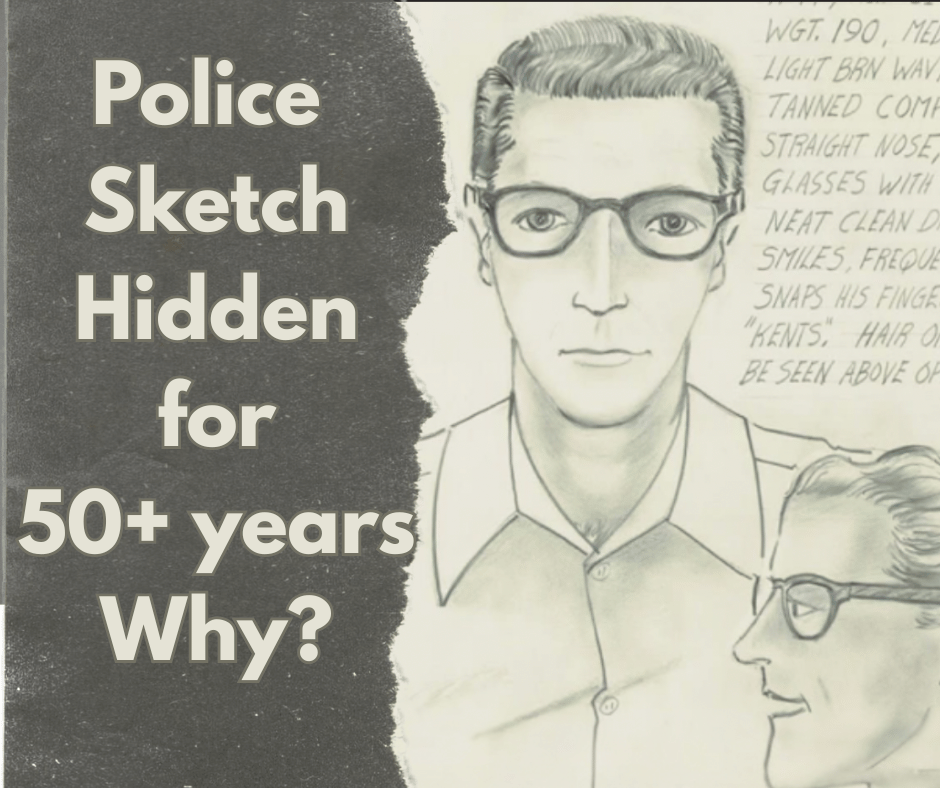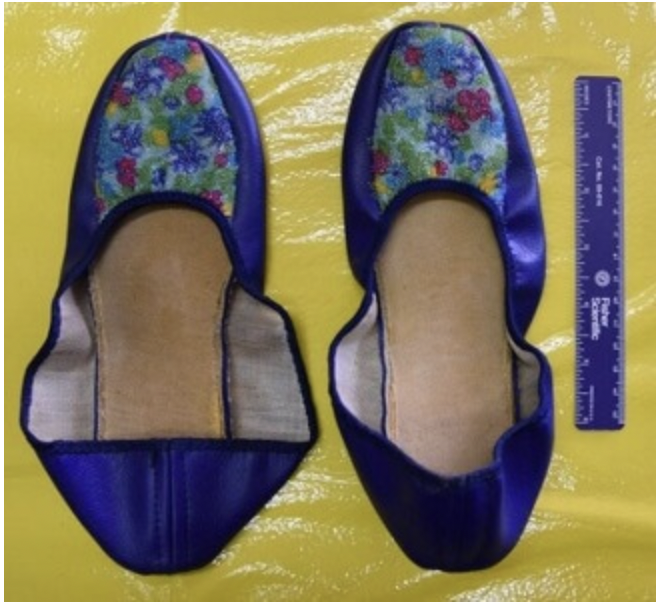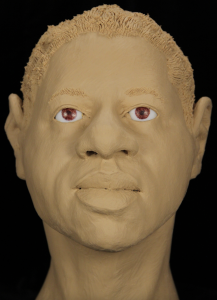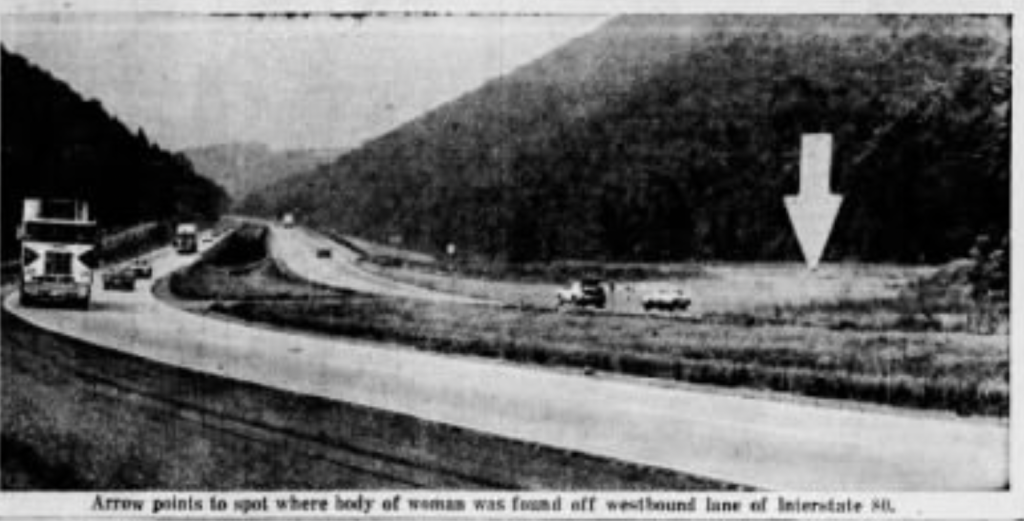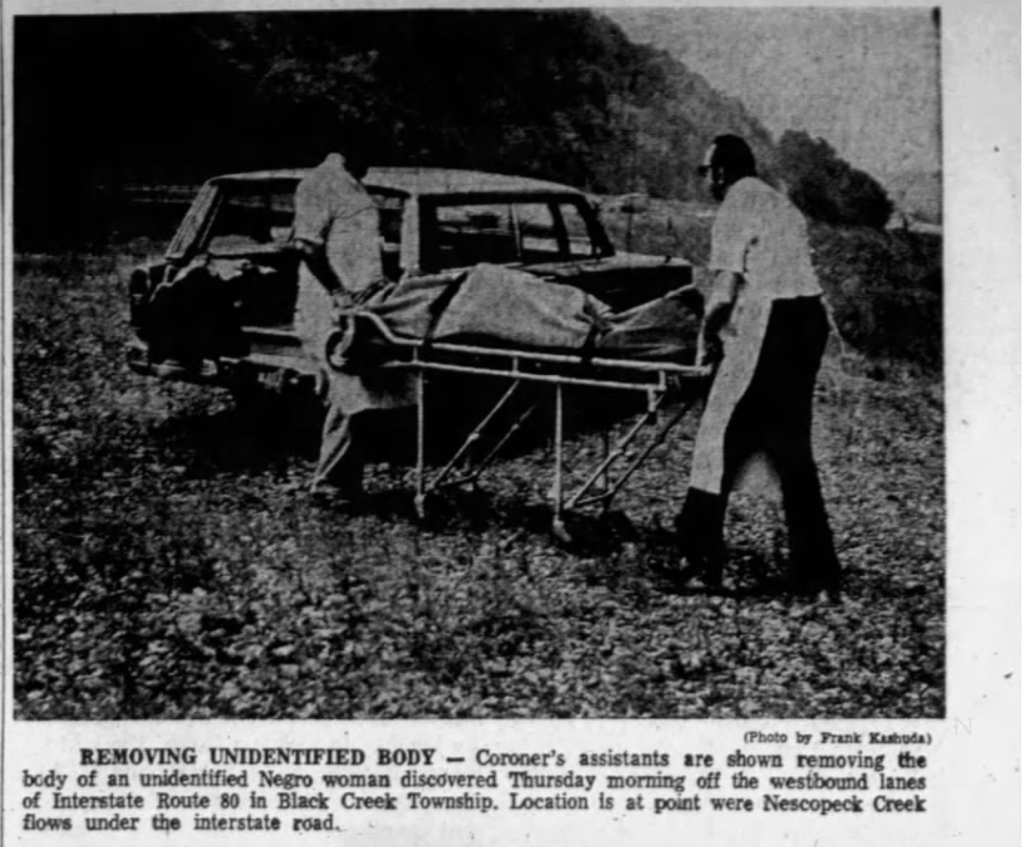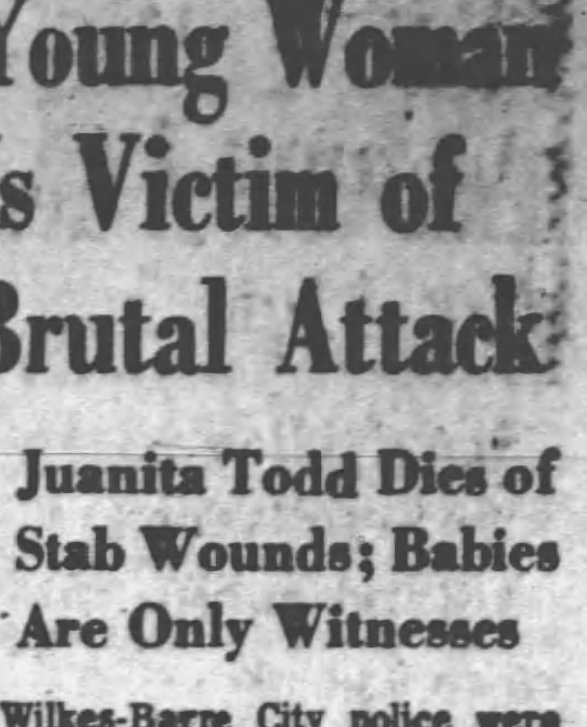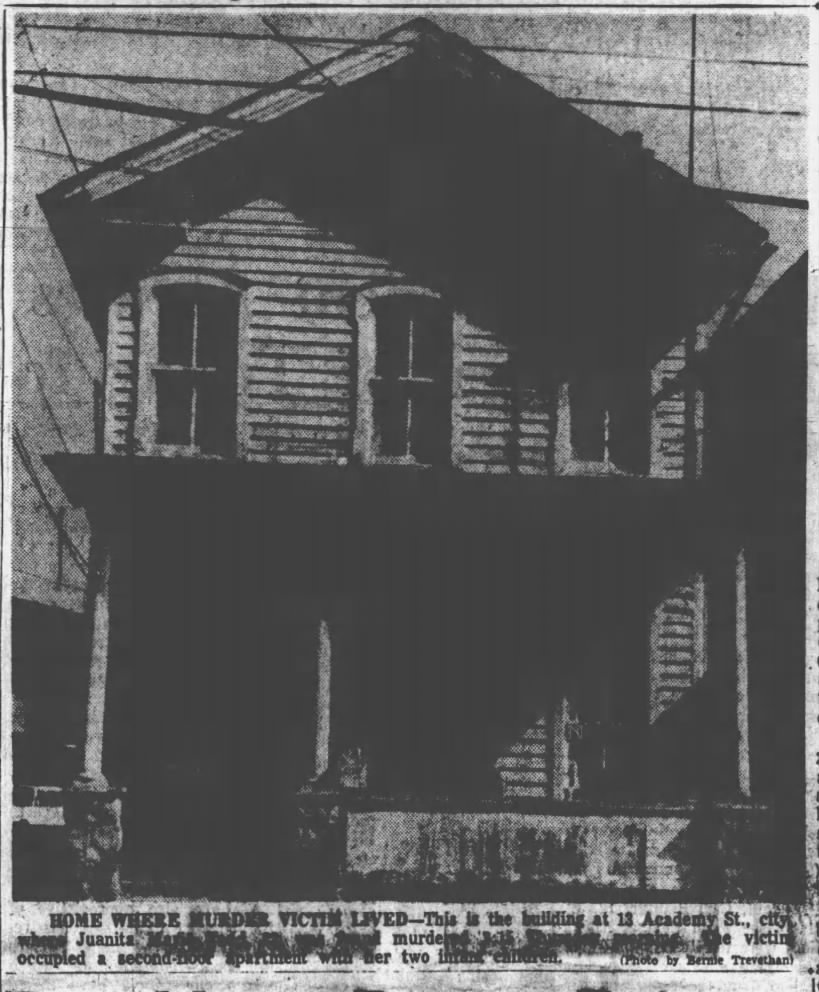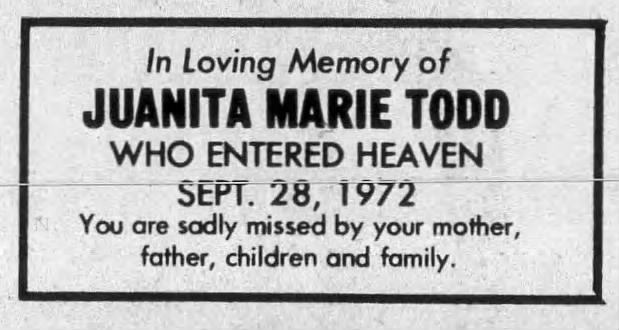Updated: June 25, 2025, added more information about the use of silencers
Lots of things don’t add up in the John Leonard murder case.
Here’s one of them:
How did no one hear the five gunshots that killed John Leonard?
At first glance, you might assume the killer used a silencer.
But look closer at the facts and the type of weapon involved, and that theory doesn’t hold up so well.
More on that below.

Background Information
John Leonard, 52, was a father of five who worked for Mick’s Motors and Taxi Service in the Poconos. He and his children lived in an apartment on the business’s property. John was a decorated World War II veteran, a former POW of a Nazi war camp, and a devout Catholic.
The last fare
On September 8th, 1970, John Leonard went out to pick up a taxi fare. It was the Tuesday after Labor Day — a beautiful late-summer day, with temperatures in the mid to upper 70s, and only a few clouds in the sky.1 According to taxi company owner Don Mick, a caller requested pickup at the entrance to the Inn at Buck Hill Falls. The Inn was 2 miles from Mick’s Motors; a mere five-minute drive.
The Inn, a massive 400-room luxury resort on a hill, loomed over Buck Hill Falls, one of five villages in Barrett Township. In 1970, the township population was just 2,452, per census records. Not exactly New York City. It was quiet and woodsy, as you can see on the map below.

Body discovery in the John Leonard murder case
News reports state taxi company owner Don Mick discovered John’s bullet-riddled body in his cab. John was parked on the long driveway leading up to the Inn. Don said he went to look for John after John stopped responding to radio calls.
John Leonard was shot five times, bullets striking his head, neck and back. Detective Craig Vanlouvender, Chief Detective of Cold Cases for the Monroe County D.A., told Dateline NBC that John was killed with a .22-caliber weapon, most likely a revolver due to the lack of shell casings at the scene. Investigators believe the killer shot him through the open driver’s side window.
The prevailing theory in the John Leonard murder case is that John was murdered right there — on the Inn’s driveway — by the person who called for the taxi.
So that would mean he was shot outdoors, in the middle of a beautiful day, 50 yards (150 feet) from the entrance of a 400-room inn and resort.
Yet, nobody heard the shots. Not any of the guests, not any of the staff, not any passersby. What are the odds?
Ballistics and Acoustics Breakdown
According to multiple sources on firearms acoustics, a .22-caliber revolver, though not the loudest gun, produces a report of 135 to 140 decibels at the muzzle.
At 50 yards away, that sound would still register at around 90 to 100 decibels — comparable to standing next to a leaf blower or motorcycle. Plus, a sharp, cracking sound like gunfire is easy to distinguish, especially in a quiet rural setting.
Could the environment have muffled the sound?
The drive up to the inn, where John was found in his taxi, was lined with hemlock trees and rhododendron bushes. Dense vegetation can muffle or scatter sound. But for five gunshots in a row to go completely unnoticed in broad daylight? While possible, it would require very unusual acoustic conditions.
What about people inside the Inn?
Most buildings, even older ones, don’t block gunfire entirely, especially at short distances. Guests or staff might have heard something, even if they didn’t recognize it as gunshots at first — a .22 can sound like a firecracker or a nail gun.
Why did no one hear the shots?
A few theories:
The killer used a sound suppressor (silencer). If the murder weapon is a .22 revolver as the police believe, a “silencer” wouldn’t do much to reduce the noise from the shots. I’m no firearms expert, so I did some research and found this:
A suppressor (silencer) is largely ineffective on a .22 revolver — or any revolver — because of the design of the gun.
Most revolvers, including .22s, have a gap between the cylinder and the barrel called the cylinder-barrel gap. When a round is fired, hot gases and sound escape through that gap, bypassing the suppressor entirely. This makes suppressors nearly useless on traditional revolvers for significantly reducing noise.
A few rare, specialized revolvers, like the Russian Nagant M1895, are designed to seal that gap and can be suppressed — but they’re not commonly used in the U.S., especially not in the 1960s or 70s.
So if someone fired a .22 revolver in a crime, even with a suppressor, it would still be quite audible, especially outdoors in a quiet area.
Environmental conditions muffled the sound. Another explanation for why no one heard the shots is the shooting happened at just the right moment, at the right place, and under the right conditions for no one to hear a thing. Ground temperature, wind direction, humidity and more can affect how far sound travels. I’d love to hear the what a ballistics expert would have to say about this.
Witnesses stayed silent. Then again, it could be that witnesses heard the shots, but decided to keep their mouths shut about it.
Police buried the report. Another possibility, in the realm of conspiracy, is people heard the shots and reported it, but the police ‘lost’ that information. (It was the ’70s.)
The body was moved. It’s also possible, since no one at the inn said they witnessed the shooting or even heard the shots, that John Leonard was killed elsewhere and his body was moved.
Why does it matter?
If a witness did hear the shots, it would’ve helped pin down a solid timeline. As it stands, the timeline of the John Leonard murder case has glaring inconsistencies. [That’s for another post.]
If John Leonard wasn’t killed at the Inn, then the crime scene everyone has accepted for half a century isn’t the real one.
And if that’s the case, the entire timeline of the crime collapses. Evidence could’ve been left behind elsewhere. Witnesses could’ve seen things in different locations.
The family’s investigation
Based on leads from their own independent investigation, the Leonard family believes that John Leonard was likely not murdered at Buck Hill Falls, but killed somewhere else and brought there.
If the family is right, and the murder didn’t happen at the Inn at Buck Hill Falls, then what else have we misunderstood about this murder case that’s been unsolved for more than 50 years?
Explore more 1970s cold cases here
Key facts – John Leonard murder case
The Victim
- John Leonard, 52 years old
- Father of five children
- Decorated World War II veteran
- Former POW in a Nazi war camp
- Devout Catholic
- Worked for Mick’s Motors and Taxi Service
- Lived with his children in an apartment on the business property
Crime Details
- Date: September 8, 1970 (Tuesday after Labor Day)
- Weather: Warm and partly sunny, highs in upper 70s
- Shot five times (head, neck, and back)
- Weapon: 22-caliber, likely a revolver
- No shell casings found at the scene
- Possibly shot through open driver’s side window
- No witnesses reported hearing gunshots
Location
- Body found in taxi on driveway to Inn at Buck Hill Falls
- Inn was a 400-room luxury resort
- Located in Buck Hill Falls village, Barrett Township
- Township population in 1970: 2,452
- Only 2 miles (5-minute drive) from Mick’s Motors
Discovery
- Body discovered by Don Mick, taxi company owner
- Mick said he went looking after John stopped responding to radio calls
- Found John’s bullet-riddled body in his cab
Prevailing Theory
- John was responding to a pickup request
- Fare requested pickup at entrance to Inn at Buck Hill Falls
- Killer likely the person who called for the taxi
- Shot to death in the driveway of the Inn
Key Mystery
- How did nobody hear five gunshots?
- No shell casings found
- No witnesses despite daytime murder
- Murder occurred near a populated luxury resort
More about the John Leonard murder case
- Sketch released in decades-old Monroe County cold case
- The Leonard family’s fight for justice.
- 💚 Donate to and share the GoFundMe: Exhumation & Solving Two Murders in One
RELATED
Who Killed Joannie Dymond of Wilkes-Barre? Missing case turned homicide

